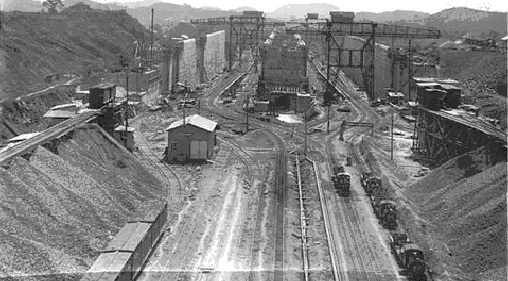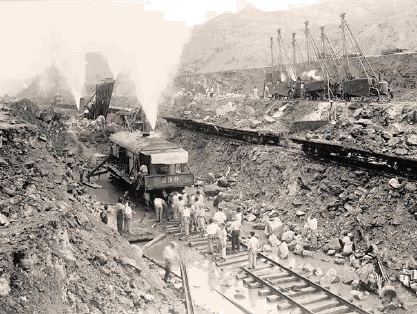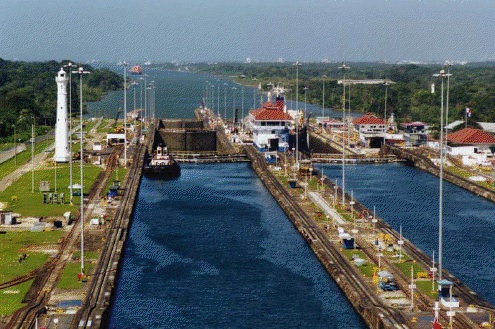The Building of the Panama Canal
Simon Markland, October 7 2012

Why was the Panama Canal needed?
Early European explorers of the Americas identified the narrow band of land between northern and southern America as an ideal place to construct a canal to link the Atlantic and Pacific Oceans. Various European colonists from the Central America area tabled a plethora of ideas for the construction of such a canal.
Any such canal would shorten the journey for both European and US merchant ships travelling east from the Californian coast. Without a canal, any ships setting sail had to endure the complicated and often dangerous trip around the southern peninsula of South America, taking in the notoriously difficult Cape Horn.
When, in the late 19th century, the construction of the canal was taken over by the United States from the French -- a secondary benefit of easier, faster naval mobility between the Atlantic and Pacific Oceans was added to the existing attractions a completed canal would offer.
When was the decision taken to build it?
With the technical advances of the late 19th century and increased pressure from the industrial powerhouses of Europe and the United States, the decision to begin construction was taken.
The initial construction project was based on a complicated sea-level canal - essentially a tidal canal. However, the construction process for this idea hit difficulties and the project was scrapped.
Who built it?
It was the French who began and later shelved the excavation of their sea-level canal scheme. But it was the industrialist new president of the United States, Theodore Roosevelt, who in 1901 declared that a Central American canal was of the utmost importance - militarily and commercially. This was following the recent loss of USS Maine during the U.S. defence of American assets during Cuba's revolt of the Spanish, and the ensuing Spanish-American War.
The U.S acquired the 'Panama Canal' project from the French for $40 million. Colombia signed a treaty with the U.S. granting permission to construct the canal through their sovereign territory. However, the Colombian Senate would not ratify the treaty. In a controversial move the U.S offered Panamanian rebels, who wanted independence from Colombia, $10 million if they proclaimed their independence. The U.S then offered military assistance by stationing a war ship in their territorial waters to dissuade Colombia from military action. On November 3, 1903, Panama declared its independence without any interference from Colombia. Three months later the Panamanians granted control of the 'Panama Canal Zone' to the United States, having signed the Hay-Bunau-Varilla Treaty. The United States set to work on the canal without further delay.
How was it built?
The Panama Canal Zone was split into three sections (Atlantic, Central and Pacific) and each section was appointed a project manager. Approximately ¾ million m³ per month was being excavated by 1907. The rate of excavation continued to increase dramatically as the pressure for completion was intensified, and the huge workforce swelled following improvements to working conditions.
How long did it take and what issues arose?
The construction project, from start to completion, took around 10 years - an incredible feat which, at the peak of excavation, saw the equivalent of a Channel Tunnel being dug out every fourteen weeks.
In addition to initial issues surrounding recruitment of labourers, due to the canal's questionable early safety record, one of the major difficulties in completing the project was tackling the continental divide - a natural barrier of hard rock, rising to more than 100 metres high. Massive mechanical steam shovels eventually cut through the continental divide, dubbed the 'Culebra Cut'.
What were the immediate results on completion?
As construction of the canal wore on, employment in the Panama Canal Zone had swelled into huge numbers, bringing with them townships and businesses. Upon completion, thousands of workers were laid off and townships demolished, forcing businesses to close.
The project had never set out to be a sustainable employer and when the canal opened, it was unanimously hailed an incredible achievement - a marvel of the modern world. Shipping patterns quickly changed and merchandise flowed freely between the U.S and other naval countries.
The canal cut approximately 7,800 miles off the sea journey from San Francisco to New York, making shipping cheaper, faster and safer.


